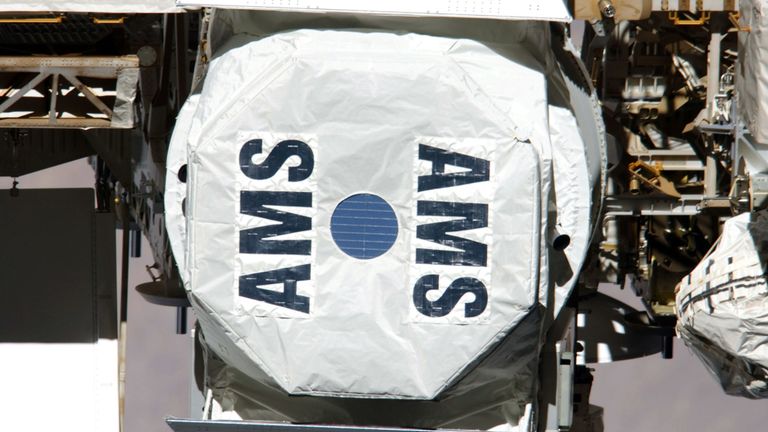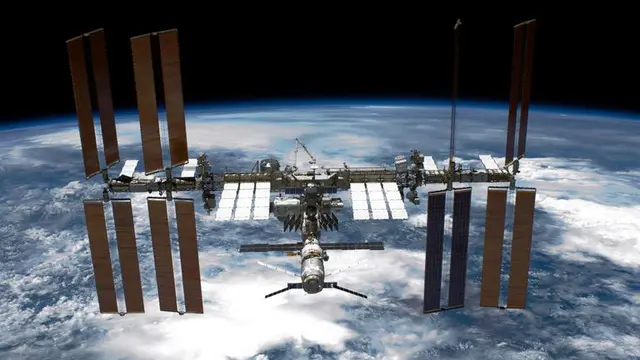The International Space Station can resume looking for antimatter and dark matter after spacewalking astronauts repaired a £1.5bn cosmic ray detector.
The ISS's seven tonne Alpha Magnetic Spectrometer has been malfunctioning since 2014, and it has taken NASA since then to devise a plan to repair its damaged cooling system.
The device was taken into orbit on the penultimate space shuttle flight in May 2011. By the time it was shut down late last year, it had studied more than 148 billion charged cosmic rays.

Image:The Alpha Magnetic Spectrometer when it was newly attached to the ISS in 2011. Pic: NASA
Those rays are high energy particles that move through space at nearly the speed of light, NASA explains on its website.
It adds that they "provide one of our few direct samples of matter from outside the solar system".
NASA's Andrew Morgan and Italy's Luca Parmitano have conducted four space walks since November to get the spectrometer up and running again.
NASA said their ventures outside the ISS were the most complicated since the Hubble Space Telescope repair missions two decades ago.
Unlike Hubble, however, the spectrometer was never intended to be maintained by astronauts in orbit - explaining why NASA took years to work out how to do it.
After the fourth spacewalk, mission control said it was too early to declare success, but said the instrument "still has a good heartbeat".
The repairs should allow the spectrometer to continue working for the rest of the life of the space station - another five to 10 years.
It was designed to operate for only three years.
 简体中文
简体中文

